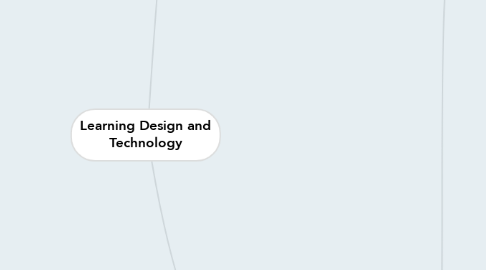
1. Major theories
1.1. Learning theories
1.1.1. Bahaviorism
1.1.1.1. Emphasise on learners' behavioural change rather than mind or emotions. Specifically, there will be a stimulus on learner. With positive/negative reinforcements, expected behaviours will show up.
1.1.2. Cognitivism
1.1.2.1. Focus on learners' mental processes through acquiring new information and emphasise making knowledge meaningful and helping learners organise and relate new information to existing knowledge in memory. Sequentially, inputting the new information and sensory memory works. In order to move the sensory memory to working memory, attention is essential to be gained by learners. And memory can be divided into 2 kinds: short-term memory and long-term memory. They transfer from one another by encoding and retrieval.
1.1.3. Constructivism
1.1.3.1. Highlighting on the process of constructing learners' understanding of meaning. There are mainly 2 types: personal/individual constructivism and social constructivism.
1.2. Instructional theories
1.2.1. Robert Gagne's Nine Events of Instruction
1.2.2. First Principles of Instruction
1.2.3. Gamification
1.2.4. RASE (Resources, Activity, Support, Evaluation)
1.2.5. Top-Down or Bottom-Up for conceptual learning
2. Models
2.1. ADDIE
2.1.1. Analysis
2.1.1.1. Needs analysis
2.1.1.1.1. What learning needs does it address?
2.1.1.1.2. Is training the right solution? Why?
2.1.1.1.3. What are the learning objectives?
2.1.1.2. Learner analysis
2.1.1.2.1. Firstly, attention should be paid to the target audience. After that, detailed analysis on their characteristics should be made to come up with appropriate learning approaches. Last but not the least, analysis on related stakeholders is necessary to figure out possible hinders or aids.
2.1.1.3. Task analysis
2.1.1.3.1. Focus on the ways or steps used to teach a new concept or procedure knowledge. Tailor and sequence steps in a reasonable way for the fully fulfilment of learning objectives.
2.1.2. Design
2.1.2.1. Design principles
2.1.2.1.1. Aesthetic-usability effect
2.1.2.1.2. Hick's law
2.1.2.1.3. KISS (keep it short and simple)
2.1.2.1.4. The alignment principle
2.1.2.2. Presentation skills
2.1.2.2.1. Use the shape of diamond
2.1.2.3. Project management
2.1.2.3.1. From the perspectives of authority and responsibility, there are mainly 4 roles within a group. They are director with the highest authority and the least responsibility, consultant with the lowest authority and the most responsibility, owner with the highest authority and the most responsibility, and service with the lowest authority and the least responsibility. It is always effective and efficient to assign a specific role to each member.
2.1.2.4. Working with teams
2.1.2.4.1. Internal teams
2.1.2.4.2. External teams
2.1.2.5. Video-based learning
2.1.2.5.1. Based on Mayer's design principles for multimedia learning, in which the combination of visual and auditory information are regarded as the most effective way to fulfil the learning outcomes, video helps with learning in a process of using eyes and ears to get the information from the video presentation. By integrating the working memory and long-term memory, the new information can be fully remembered and understood.
2.1.3. Development
2.1.3.1. Create a sample
2.1.3.2. Develop the course materials
2.1.3.3. Conduct a run-through
2.1.4. Implementation
2.1.4.1. Pilot
2.1.4.2. Train the trainer
2.1.4.3. Roll out
2.1.5. Evaluation
2.1.5.1. Kirkpatrick's 4-level evaluation
2.1.5.1.1. 1 Reaction
2.1.5.1.2. 2 Learning
2.1.5.1.3. 3 Behavior
2.1.5.1.4. 4 Results
